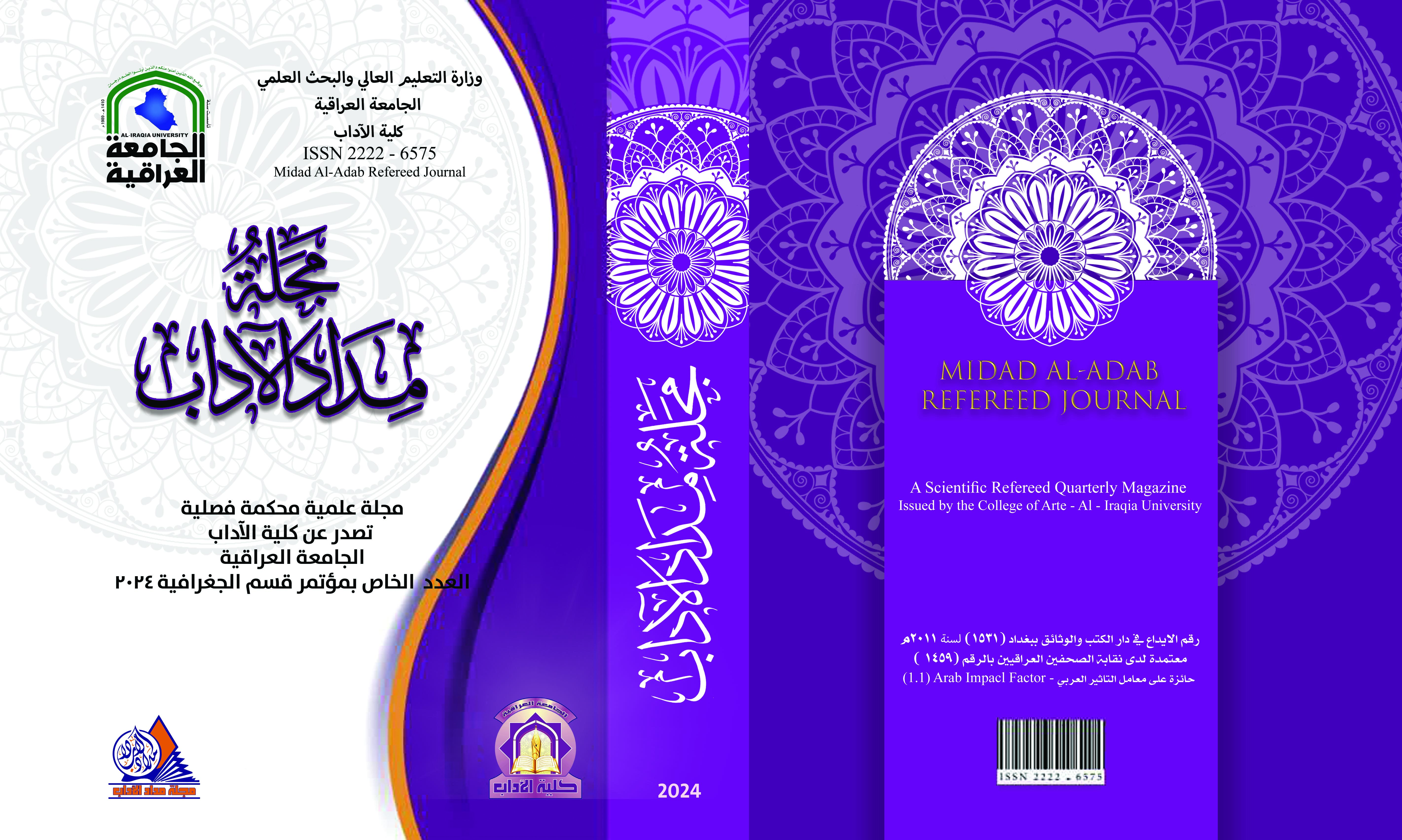التغيرات المناخية وعلاقتها بأمراض محصولي القمح والشعير في محافظة ذي قار (دراسة في الجغرافية المناخية الحياتية التطبيقية )
DOI:
https://doi.org/10.58564/ma.v14iالعدد%20الخاص%20بمؤتمر%20قسم%20الجغرافية.1516الكلمات المفتاحية:
الكلمات المفتاحية : التغيرات المناخية ، امراض القمح والشعير، وحدات محافظة ذي قار ، المحاصيل الحقلية ، المناخ الجاف الصحراويالملخص
توصلت البحث إلى إن مؤشرات التغير المناخي لها اثر في انتشار بعض الإمراض التي تصيب محصولي القمح والشعير في محافظة ذي قار ويتضح من خلال جمع وتحليل تغير الخصائص المناخية المختلفة الشهرية والسنوية لمحطة رصد ( الناصرية ) الأساسية لمحافظة ذي قار ( منطقة الدراسة ) لدورة مناخية كبرى أمدها ثمانية وسبعون سنة للمدة (1941-2018) قسمت على سبع دورات مناخية صغرى بواقع 11 سنة لكل دورة باستثناء الدورة السابعة 12 سنة هي 1941-1951 ومن 1952-1962 ومن 1963-1973 ومن 1974-1984 ومن 1985-1995 ومن 1996-2006 ومن 2007-2018 ، إذ توصلت الدراسة إلى الكشف عن واقع اتجاهات مناخ محافظة ذي قار ، ومعرفة واقع الاتجاه العام لعناصر المناخ المختلفة كالإشعاع الشمسي ، ودرجات الحرارة (العظمى والصغرى والاعتيادية ) والضغط الجوي والرياح ، والأمطار، والرطوبة ، فضلاً عن ظاهرة الغبار بأنواعه (عاصفة ترابية ، غبار متصاعد، غبار عالق) وظاهرة التطرف الحراري (موجات الحر والبرد ) ، من خلال الاعتماد على سلسلة من البيانات الإحصائية لعدد من المتغيرات المناخية لمحطة الأرصاد الجوية في الناصرية الممثلة لمحافظة ذي قار ، وتوصلت الدراسة إلى أن قضاء الناصرية احتل المرتبة الأولى بالإمراض التي تصيب محصولي القمح والشعير ، إذ إن الأسباب التي جعلته يحتل المرتبة الأولى بالأمراض التي تصيب محصولي القمح والشعير منها تعرض قضاء الناصرية لتكرار ظواهر الجو الغبارية لقربه من الهضبة الغربية الصحراوية ، فضلاً عن قلة المساحات المزروعة والمغطاة بالمياه ، ويشهد القضاء تلوثاً جويا خطيراً لتركز أكبر عدد من المصانع التي تقع بالقرب من المناطق المأهولة بالسكان وانتشار معامل الطابوق في نواحي القضاء مثل معامل طابوق ناحية الإصلاح ، وأيضاً حملات الأعمار وتردي الخدمات وطفح مياه الصرف الصحي وانتشار الأوبئة والحشرات الضارة بأشجار النخيل وغيرها من العوامل المناخية والبيئية والملوثات الجوية الأخرى مثل انتشار حبوب اللقاح وأريج النباتات والمتحسسات الجوية أسهمت في زيادة حدة الإصابة بالأمراض التي تصيب محصولي القمح والشعير ، واحتل قضاء الشطرة المرتبة الثانية بإعداد القمح والشعير المصاب بالإمراض ، وقضاء الرفاعي احتل المرتبة الثالثة بأعداد القمح والشعير المصاب وقضاء سوق الشيوخ احتل المرتبة الرابعة وقضاء الجبايش احتل المرتبة الخامسة والأخيرة بإعداد القمح والشعير المصاب بإمراض مناخية وفسيولوجية للمدة 2012- 2022 في محافظة ذي قار للأسباب الجغرافية المناخية الطبية البيئية المتظافرة مع بعضها البعض نفسها .
التنزيلات
منشور
إصدار
القسم
الرخصة

هذا العمل مرخص بموجب Creative Commons Attribution-NonCommercial-NoDerivatives 4.0 International License.








